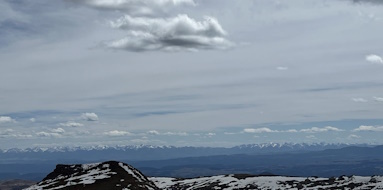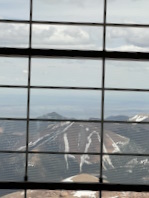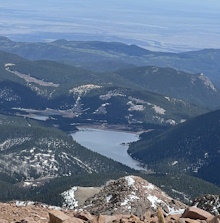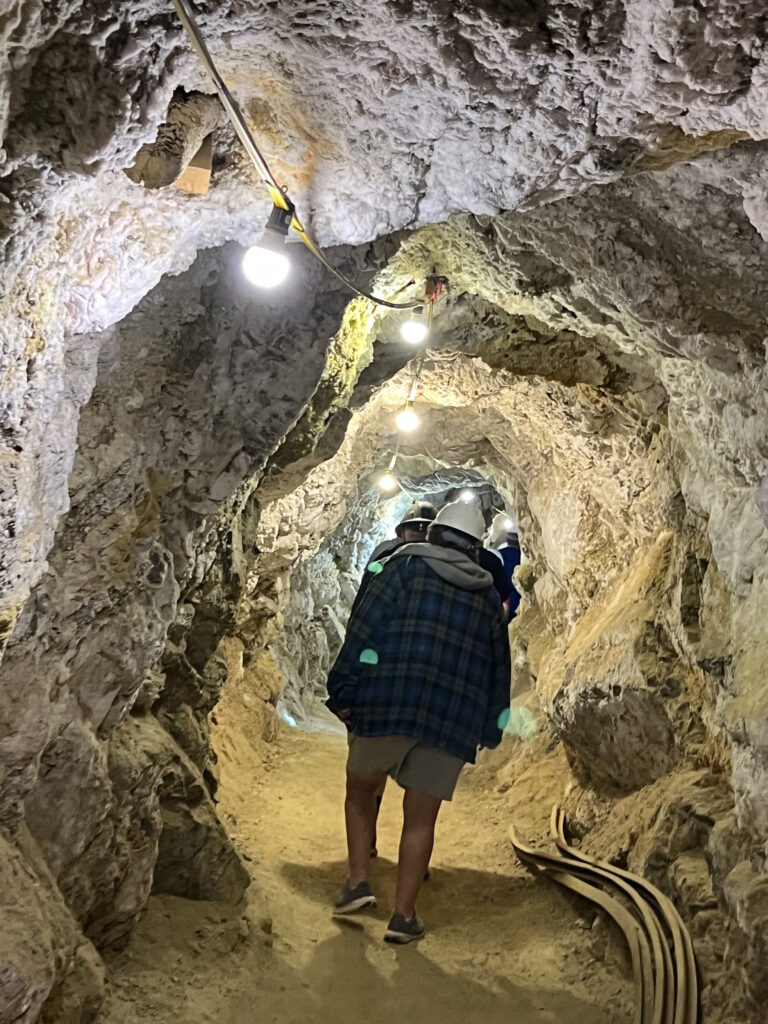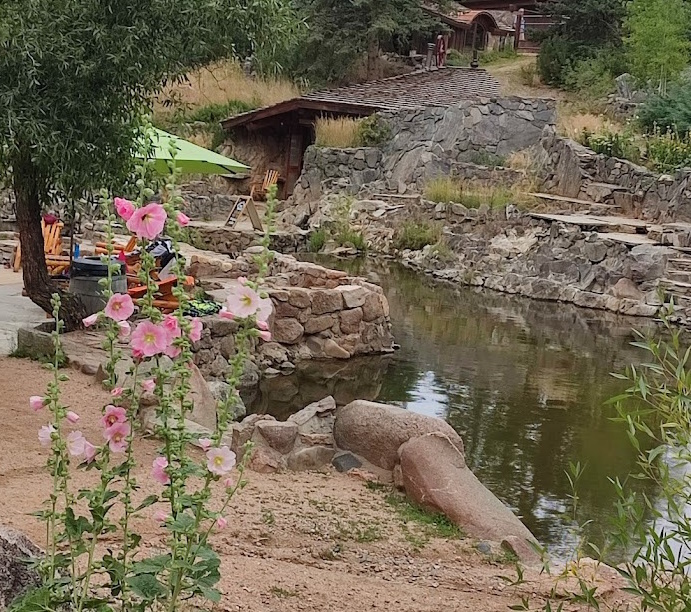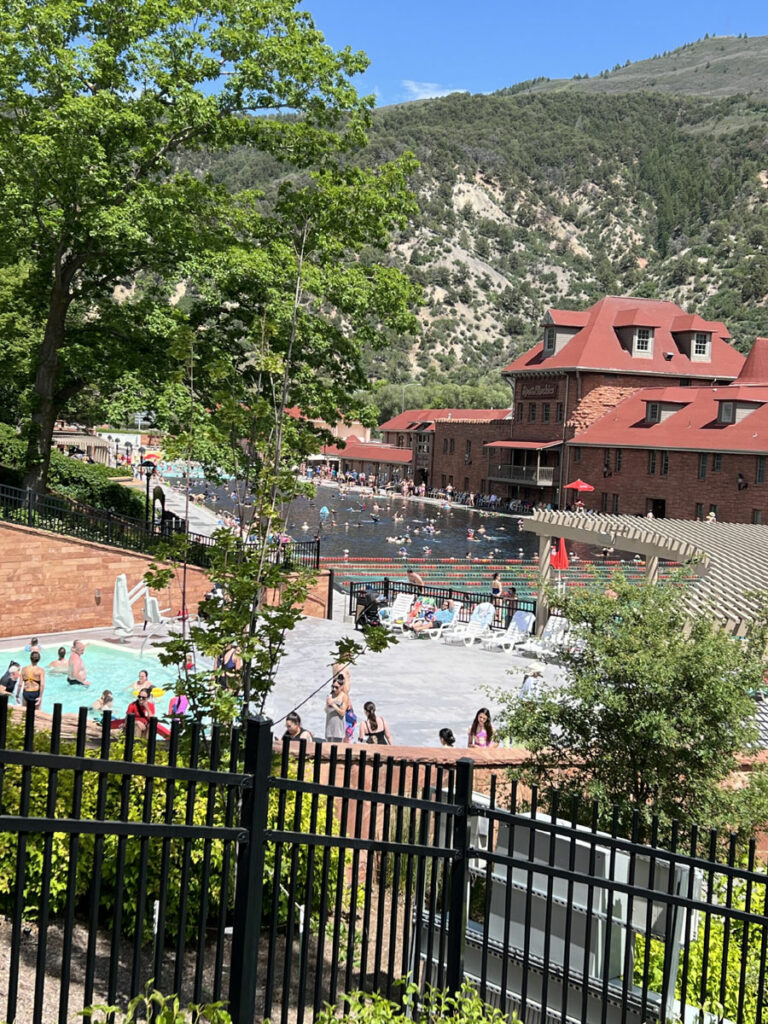Pikes Peak
Pike’s Peak is the highest summit of the southern Front Range of the Rocky Mountains in North America and — for good reason too! It is one of the most popular tourist attractions near Colorado Springs, Colorado. It was named after Zebulon Pike, an American brigadier general and explorer who was not able to reach the 14,115-foot summit.
To Katharine Lee Bates, a college teacher in Colorado Springs, Pike’s Peak became an inspiration about the vastness and beauty of America. After taking a carriage ride as far up the mountain as possible, they switched to burros for the remaining six miles of the trip. She spent half an hour admiring the view at the summit and on the way down, she recorded notes in her diary that she later turned into a poem which became America’s anthem “America The Beautiful.”
To mountain climbers, Pike’s Peak is one of Colorado’s 54 fourteeners, which means it is in a category of fifty-four mountains that are more than 14,000 feet above sea level.
A person can get to the summit of Pike’s Peak by hiking, biking, riding the cog railway, driving themselves or taking a tour. I advise against bike tours because drivers tend to come around the hairpin curves on the wrong side of the road and there are many out-of-state drivers unfamiliar with such challenging driving conditions. Since drivers are often unable to fully admire the scenery while negotiating steep hills and sharp curves, locals recommend a jeep tour.
The Pike’s Peak Cog Railway is the highest and longest rack railway in the world. The average incline is 12% but there are stretches where it climbs as steep as 25%.
With the amount of snow in the area, it is an impressive feat to keep the cog railway and the road to the summit open year-round. A snowplow from Switzerland helps clear the cog railway of drifts up to ten feet tall and twenty feet wide by a railroad snowplow acquired from Switzerland. They still use plows on the main road but also have gigantic snow throwers which can throw snow about fifty feet which is also a spectacular sight.
Whenever we are climbing this mountain by car, we always notice the small tree trunks lashed to upright signs and guard rails, a reminder of the difficulties encountered by road maintenance crews working in conditions where the guard rails often disappear entirely beneath the snow.
As we gain elevation, my partner and I chew gum to help our ears to adjust.
Pikes Peak has the distinction of having four out of six classically described life zones.
We are used to the 6,000-to-8,000-foot Foothills Zone, known for ponderosa pine, sagebrush, and fox, coyote, skunk, rabbit, squirrel, and raccoon. The 8,000-to-10,000-foot Montane Zone is known for its aspen groves which we always take note of, so we won’t miss coming back to see them in the fall when they turn spectacular shades of red and gold. Deer and albert squirrels are common here. These little squirrels are sometimes completely black in color and known for their long-tufted ears. Bear and mountain lions live in this area, but we’ve never seen them.
By the time a person reaches the top of the Sub Alpine zone, which is 10,000 to 11,500 feet, the trees show signs of enduring harsh conditions. Their growth is stunted, and their limbs often twisted by nearly constant wind. It is not unusual to see branches growing on only one side of these tenacious little trees. However, the plus side to fewer trees is better views. Low growing vegetation is often eaten by Rocky Mountain Sheep which visitors may or may not get a chance to see. However, I often catch a glimpse of my favorite little critters, yellow-bellied marmots which are cuddly looking rock rats that spend about eight months a year hibernating. I often see them sunning themselves on boulders and hear their little warning cry when hawks fly overhead. Because of their high-pitched warning cry, these marmots are often called “whistle pigs.” Out of respect for how fragile the Alpine Zone is, we never walk on it. Some of the plants in the Alpine Zone can take as much as 75 years to grow only half an inch. At the summit, golden eagles, red-tailed hawks, and falcons often take advantage of air currents known as mountain updrafts, to soar effortlessly over the mountain as they search for marmot and little rock mice called pika.
